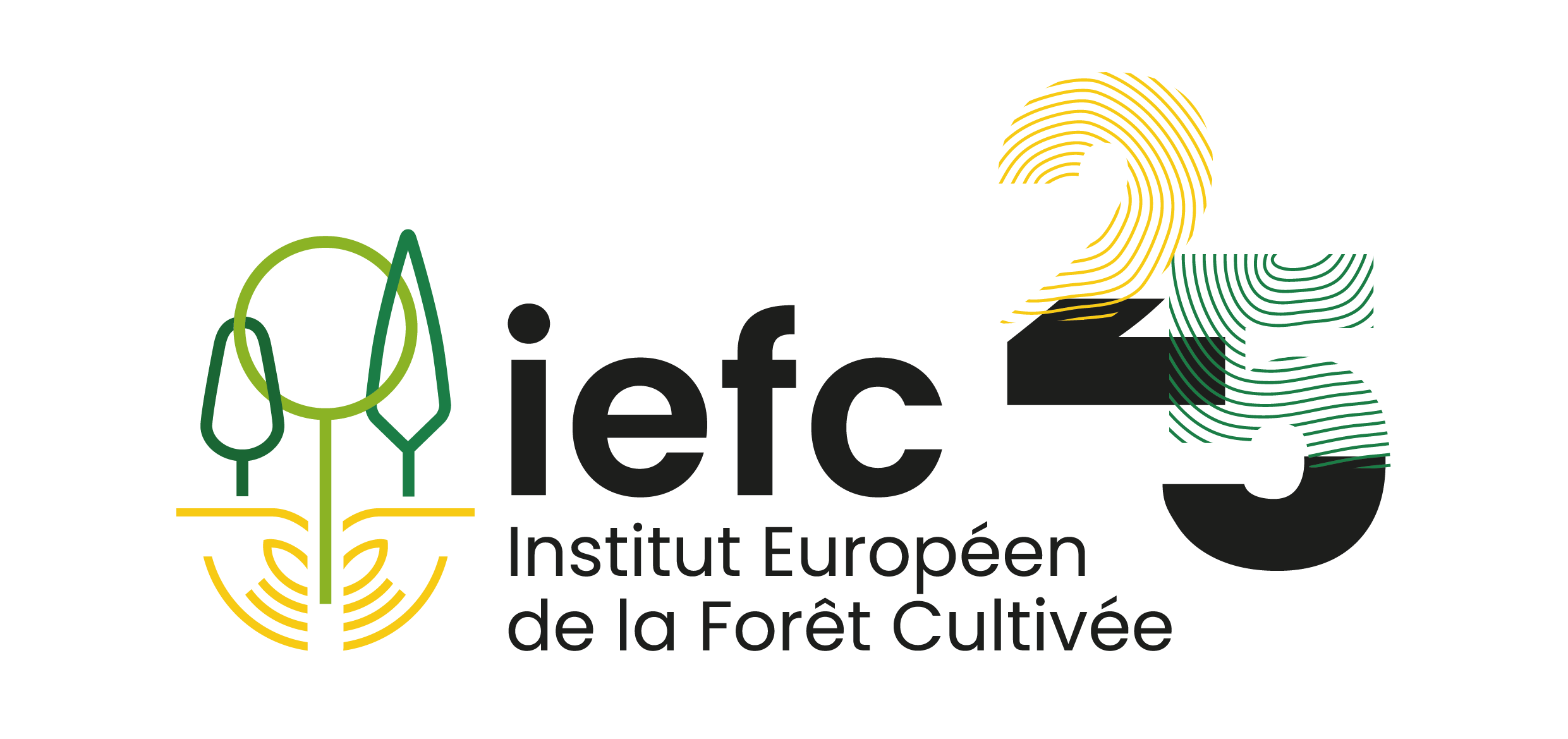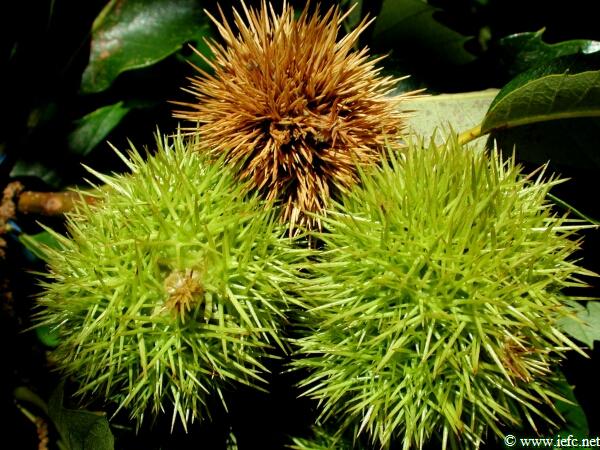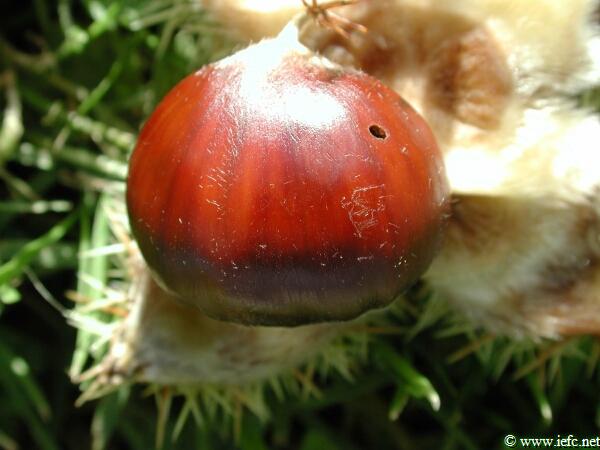Chestnut tortrix
Cydia splendana (Lepidoptera, Tortricidae)
synonym: Laspeyresia splendana
Host tree
Chestnut (Castanea), oak (Quercus) and more rarely hazel (Corylus).
Identification
- Husks turn brown and drop.
- Presence of caterpillars within the fruit surrounded by frass.
- Presence of exit holes (1,5-3 mm) on the nutshell.
- Caterpillars are 12 to 16 mm long, white or pinkish in colour with the first thoracic segment dark brown. Possible confusion with two other species that can be present in chestnut fruits: Pammene fasciana and Curculio elephas. The caterpillars of Pammene fasciana are shorter (10-13 mm) and have a reddish colour. The legless larvae of the weevil Curculio elephas are creamy white with a brown head, 7-12 mm long, thick and curved as a C and are surrounded by darker and coarser frass.
Damage
- Fruits drop prematurely.
- Destruction of the nut causing loss of ripe fruits.
- Presence of attacked fruits decreases the quality of production and increases the cost of preparing fruits for sale.
Biology
- There is one generation per year.
- Adult moths fly from July to October, depending on the location, depositing eggs mainly on the upper surface of the leaves.
- Young caterpillars enter the fruits close to the attachment point, then gnaw through it destroying the inside. Each caterpillar attacks only one chestnut.
- Caterpillar development takes about 3 weeks.
- Full-grown caterpillars leave the fruits from September to November by making a hole in the nutshell and bury themselves into the ground at a depth of 5-8 cm. There they overwinter in a white cocoon incorporating soil particles and debris. It is also possible to find cocoons under the bark of the host plant.
Risk factors
- Accumulation of attacked fruits on the forest floor.
- In dry summers attacks are often more important.
- In thin, poor soils and stony soils attacks are severe.
Distribution
- Occurs throughout Europe, where host trees are present.
Pest management
Monitoring
- From August to October use of pheromone traps to estimate number of adult moths.
- Randomly fruit sampling to estimate attack level.
Preventive measurements
- Remove infested husks, as soon as possible, from the soil and destroy them to avoid caterpillars to leave the fruits and dig into the soil.
Curative control
- Soil mobilisation during winter or spring exposes cocoons and thereby kills them, lowering the insect population. However it is recommended to avoid deep mobilisation (not deeper than 10-15 cm) and to avoid the vicinity of the tree trunk, especially in areas with risk of Phytophthora damage.
- Insecticides should not be used and are not registered for forests in Europe. Their use in chestnut orchards should follow national legislations.
- Mating disruption technique (in study).
Climate change
- Effects of climate change are difficult to assess. The moth will most probably react to the changes on host trees in terms of occurrence and physiology. Since it is more prone to attack stressed trees, increased damage are to be expected in regions where chestnuts and oaks will suffer from drought and heat stress (e.g. southern Europe).



